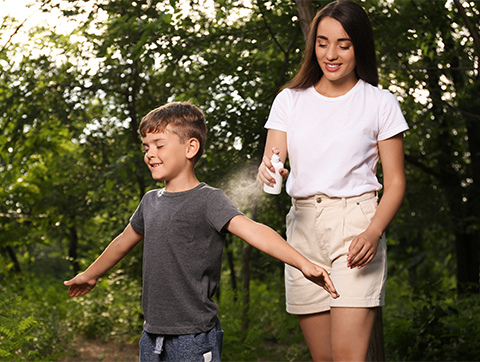- Home
- Types of Poisons
- Pesticides
- Insect Repellent
Insect Repellent

Insect repellents can help keep mosquitoes, ticks, flies and other insects from biting. This is important because many of these insects can transmit diseases. However, if insect repellent is used incorrectly, it could be dangerous.
There are many different types of insect repellents available. DEET, picaridin, IR3535 and oil of lemon eucalyptus are some of the common insect repellents. Repellents work to impair an insect’s ability to smell and taste, which prevents it from finding a host. Repellents can come as sprays, wipes or lotions. The concentration of repellents and level of physical activity will also affect how long the repellents are effective. They can be applied to human skin, and some can be used on clothing.
Call the 24-Hour Poison Help Line for Additional Support: